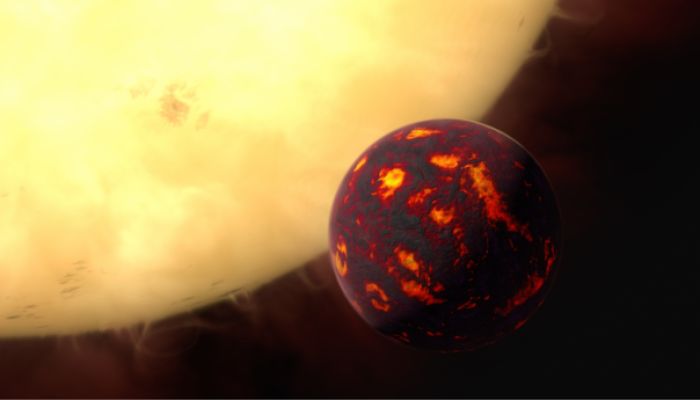Scientists discover 'devilishly hot' exoplanet
Minimum radius of Janssen's orbit is about two million kilometres
December 11, 2022

According to new research, an Earth-sized planet known as "hell" heated up so horribly because it circles near the equator of its star.
This "super-Earth" is covered in an ocean of lava that has a surface temperature of about 2,000 degrees Celsius. The rocky planet, known as "Janssen," is one of the most bizarre ones ever found outside of our solar system.
Because of the abundance of carbon, which produces priceless diamonds under intense pressure, it is also referred to as the "diamond planet." The fresh information was obtained using space exploration equipment that measured sunlight from Janssen's star, Copernicus, with extreme precision.
The finding could have consequences for alien hunters. Such knowledge is essential for determining the prevalence of Earth-like settings and the potential abundance of extraterrestrial life in the universe.
“We’ve learned about how this multi-planet system — one of the systems with the most planets that we’ve found — got into its current state,” said study lead author Lily Zhao, a research fellow at the Flatiron Institute’s Center for Computational Astrophysics (CCA), in a media release.
The other planets discovered have orbital patterns that are so dissimilar that they never even pass by Earth. As Janssen passed between Earth and the star, the light measurements slightly changed, similar to what would happen if our moon were to block the sun during a solar eclipse.
It implies that the planet originated in a colder orbit farther from Copernicus and gradually descended there over time. Janssen's course changed as it got closer. The planet "was probably so hot that nothing we're aware of would be able to survive on the surface," according to Dr Zhao, even in its initial orbit.
Researchers believe these findings, published in the journal Nature Astronomy, will help us better grasp how planets develop and travel over the course of aeons.
Janssen is the first known "super-Earth," having been found in 2004. It is twice as wide and roughly eight times as big as our world. Hydrogen is abundant in the environment. Helium and maybe hydrogen cyanide are also present. Despite having a hellish surface, it is the only exoplanet that we are aware of that has an atmosphere.
The minimum radius of Janssen's orbit is about two million kilometres. The population of Mercury is 46 million, while that of Earth is 147 million.
The planet is estimated to have formed roughly eight billion years ago by astronomers. At first, they questioned its existence because of how closely it orbits Copernicus.









